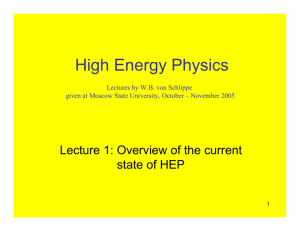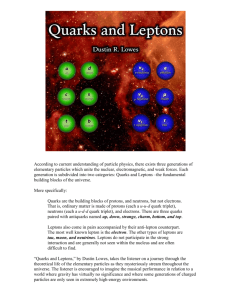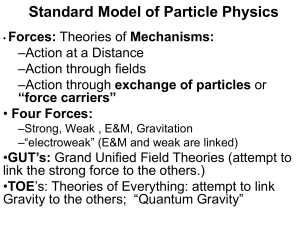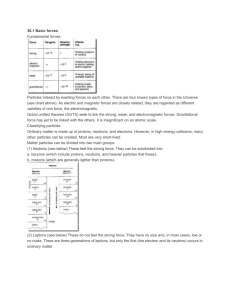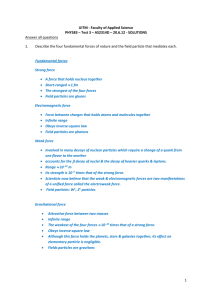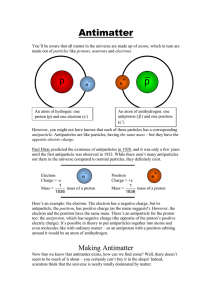Elementary particles – introduction
advertisement
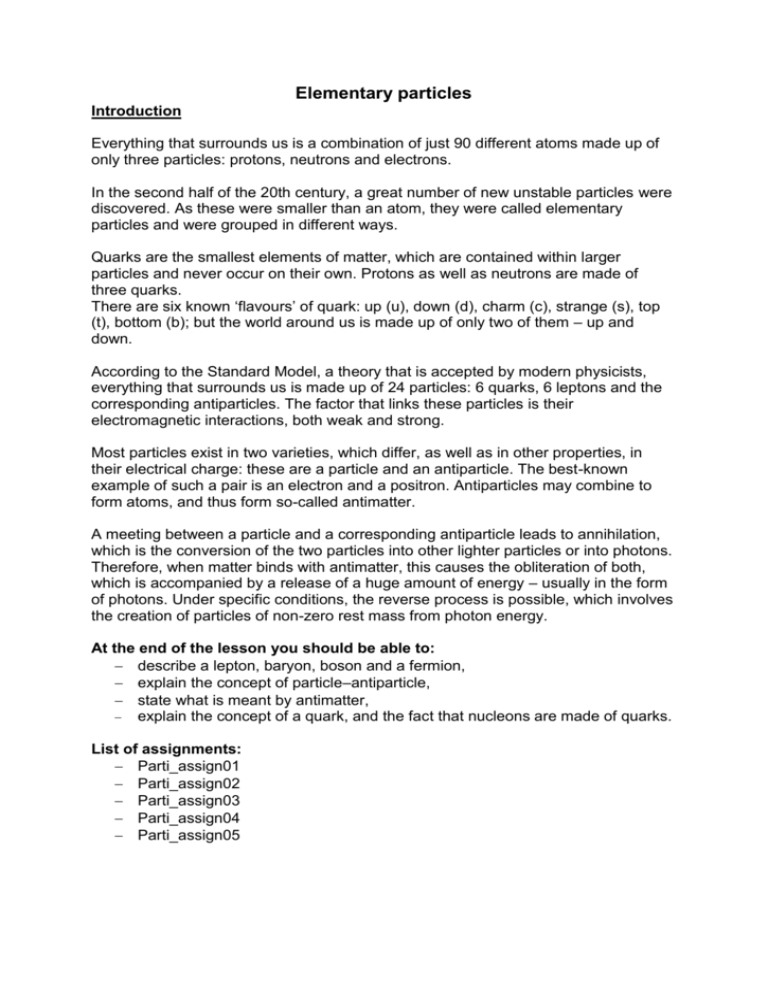
Elementary particles Introduction Everything that surrounds us is a combination of just 90 different atoms made up of only three particles: protons, neutrons and electrons. In the second half of the 20th century, a great number of new unstable particles were discovered. As these were smaller than an atom, they were called elementary particles and were grouped in different ways. Quarks are the smallest elements of matter, which are contained within larger particles and never occur on their own. Protons as well as neutrons are made of three quarks. There are six known ‘flavours’ of quark: up (u), down (d), charm (c), strange (s), top (t), bottom (b); but the world around us is made up of only two of them – up and down. According to the Standard Model, a theory that is accepted by modern physicists, everything that surrounds us is made up of 24 particles: 6 quarks, 6 leptons and the corresponding antiparticles. The factor that links these particles is their electromagnetic interactions, both weak and strong. Most particles exist in two varieties, which differ, as well as in other properties, in their electrical charge: these are a particle and an antiparticle. The best-known example of such a pair is an electron and a positron. Antiparticles may combine to form atoms, and thus form so-called antimatter. A meeting between a particle and a corresponding antiparticle leads to annihilation, which is the conversion of the two particles into other lighter particles or into photons. Therefore, when matter binds with antimatter, this causes the obliteration of both, which is accompanied by a release of a huge amount of energy – usually in the form of photons. Under specific conditions, the reverse process is possible, which involves the creation of particles of non-zero rest mass from photon energy. At the end of the lesson you should be able to: describe a lepton, baryon, boson and a fermion, explain the concept of particle–antiparticle, state what is meant by antimatter, explain the concept of a quark, and the fact that nucleons are made of quarks. List of assignments: Parti_assign01 Parti_assign02 Parti_assign03 Parti_assign04 Parti_assign05 Elementary particles Worksheet 1. What is the difference between leptons and baryons? ………………………………………………………………………………………………… ………………………………………………………………………………………………… ………………………………………………………………………………………………… ………………………………………………………………………………………………… 2. Complete the diagram with the names of particles: bosons, fermions, hadrons, mesons, baryons, leptons. 3. What is a quark? ………………………………………………………………………………………………… ………………………………………………………………………………………………… ………………………………………………………………………………………………… ………………………………………………………………………………………………… 4. What quarks make a Proton: …………………………………………………………… Neutron: …………………………………………………………. 5. What is an antiparticle? ………………………………………………………………………………………………… ………………………………………………………………………………………………… ………………………………………………………………………………………………… ………………………………………………………………………………………………… 6. Describe the atom of antihydrogen: ………………………………………………………………………………………………… ………………………………………………………………………………………………… ………………………………………………………………………………………………… ………………………………………………………………………………………………… 7. What is the Standard Model? ………………………………………………………………………………………………… ………………………………………………………………………………………………… ………………………………………………………………………………………………… ………………………………………………………………………………………………… 8. What is an annihilation? ………………………………………………………………………………………………… ………………………………………………………………………………………………… ………………………………………………………………………………………………… …………………………………………………………………………………………………
